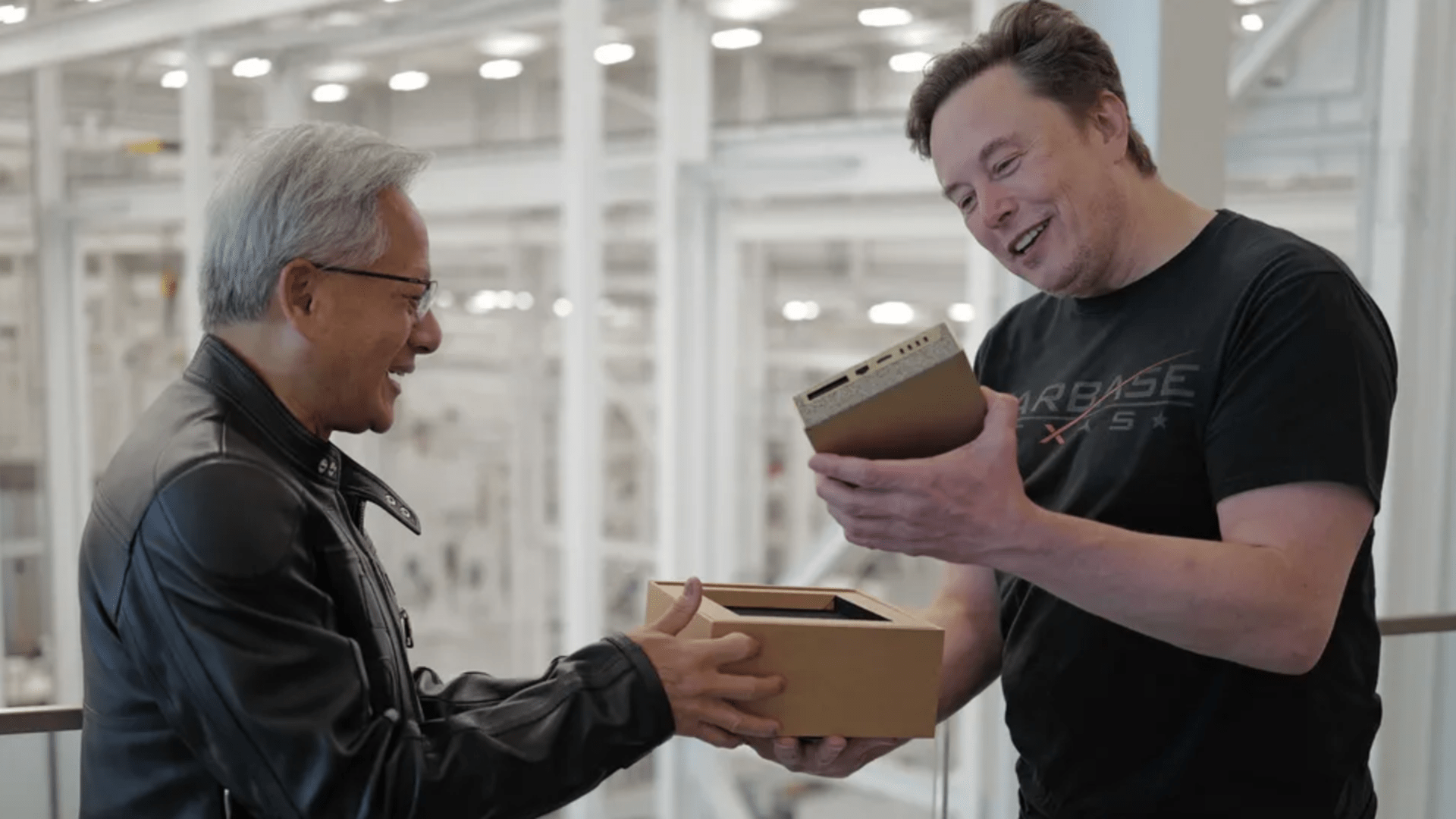- Jensen Huang’s Delivery Shot Turns Product Launch Into an Industry Statement
- Nvidia DGX Spark carries more symbolism than silicon in today’s AI world
- Musk-Altman Rivalry Now Fuels Nvidia’s Growing Dominance in AI
Nvidia CEO Jensen Huang appeared at Elon Musk’s starbase in Texas to personally deliver a DGX Spark, joking about “delivering the smallest supercomputer next to the biggest rocket.”
However, the move symbolized much more than just a marketing stunt: it highlighted how the AI industry’s biggest figures now operate in rival camps, separated by both ideology and ambition.
Sam Altman received the same system hand-delivered elsewhere, a repeat of the courtesy shown nine years earlier when Huang brought OpenAI its first DGX-1.
From restaurant changes to billion-dollar deals
Huang’s story is one of calculated symbolism. Once a waiter at Denny’s, he has returned to that role, this time offering computing power instead of pancakes.
Its latest “delivery service” may sound gimmicky, but it solidifies Nvidia’s dominance at a time when demand for high-performance AI hardware has never been higher.
Each DGX Spark, sold for $3,999, represents not only a tool but also a token of status among AI leaders.
Nvidia’s decision to limit the first batch to companies like Google, Meta and Microsoft underscores its role as gatekeeper in a crowded, compute-hungry market.
The DGX Spark is a mini PC powered by the GB10 Grace Blackwell superchip. It has 128 GB of unified memory and AI performance of up to a petaflop.
Nvidia claims it can run models with up to 200 billion parameters, but such numbers raise questions about the durability and accessibility of this kind of performance outside of elite research labs.
Partner brands like Acer, Asus, Dell and Lenovo offer their own versions, although buyers hoping for Huang’s personal touch will have to settle for standard shipping.
While Huang’s shared photo between Altman and Greg Brockman might suggest camaraderie, the underlying story tells otherwise.
The relationship between Musk and Altman, once based on the shared vision of “safe AI for the benefit of humanity,” has transformed into open competition.
Musk’s xAI and Altman’s OpenAI now open two different paths to AI supremacy, both relying on Nvidia silicon to stay ahead of the curve.
For technological elites, the DGX Spark marks influence as much as innovation. For researchers, this reflects how progress in AI often depends on who can afford the latest hardware.
Nvidia’s carefully curated deliveries show that in AI, perception often carries as much weight as raw power.
Via Tom’s material
Follow TechRadar on Google News And add us as your favorite source to get our news, reviews and expert opinions in your feeds. Make sure to click the Follow button!
And of course you can too follow TechRadar on TikTok for news, reviews, unboxings in video form and receive regular updates from us on WhatsApp Also.




